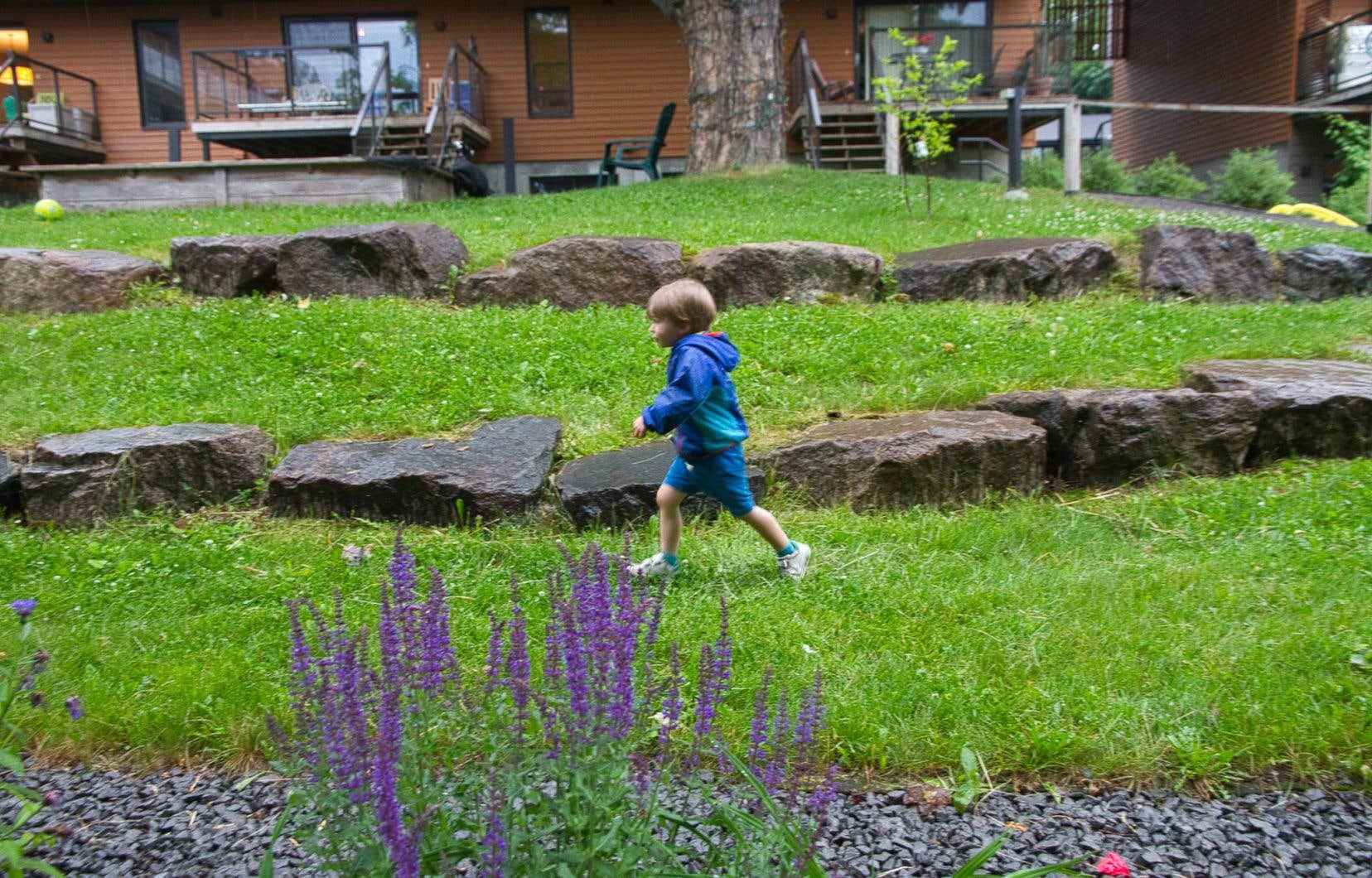Cohousing is an intentional community united around common social and environmental values. Onepointfive.ca visited one of those rare micro-societies that take root in Quebec.
In Quebec, in the Saint-Sacrement district, a hundred neighbors aged 1 to 87 form a united community in what can be called an urban village. Cohabitat Québec — whose legal framework is a solidarity cooperative and divided co-ownership — includes 42 private dwellings in four separate buildings, as well as a common house.
The latter brings together the spaces shared by the co-owners: kitchen worthy of the Château Frontenac, dining room for the common meal of the week, free laundry room, workshop for experienced do-it-yourselfers. There are even two guest rooms, which we guess are very busy during the Summer Festival!
Outside, a large common and vegetated courtyard hosts children’s play modules, a majestic sugar maple, a skating rink in winter, and a vegetable garden in summer. Cars are confined to the street or to the adjacent parking lot with barely 20 spaces, many of which have electric vehicle charging stations.
“The balance between private and community life is delicate. Respecting it is one of the fundamental values of our community,” continues Christiane Boilard, responsible for sustainable development within the Community Development circle — the community has eight of these sociocratic groups.
A strong collective culture is necessary. This is why these communities are spreading in the Nordic countries, where social democracy reigns.
“We ask to give about three hours a week to the community. Beyond that, everyone is free to choose,” explains Jean-Yves Fréchette, from the Communications circle.
green community
Inaugurated in 2013 by six visionary residents, Cohabitat Québec was for a long time the only one in the province – it has recently been found in Neuville and Frelighsburg, among others. However, the movement has existed for a long time in Denmark, where it was born during the 1960s.
“A strong collective culture is necessary. This is why these communities are spreading in the Nordic countries, where social democracy reigns,” analyzes Estelle Le Roux, co-founder of Village Urbain, an organization that pilots a cohousing project in the Montreal borough of Lachine.
The common interest occupies a preponderant place at all stages of the life of a cohousing. Also, “a strong concern for everything related to the climate and the environment generally binds the neighbors”, observes Estelle Le Roux. This is the case with Cohabitat Québec, where this concern is particularly evident in the recycling of runoff water, the use of light-coloured materials with a high albedo to reduce the heat island effect, and in energy efficiency certified LEED Canada, Platinum level, and Novoclimat.
In addition, the members of Cohabitat Québec divide their respective greenhouse gas emissions among themselves. emerging internally: Locomotion,” says Mitémo Chevalier, a member of the Cercle Bâtiment, who has been living at Cohabitat Québec for barely a year. Need a raclette oven or a pair of rackets? A phone call or an email to everyone is enough to borrow these rarely used objects.
Finally, cohousing is an intelligent way to densify city centers — the density of Cohabitat Québec is 57.5 dwellings per hectare, according to the firm Tergos Architecture, which collaborated on the project. “It hurts less to run into the wall in a gang than alone! jokes Jean-Yves Fréchette, talking about the climate crisis. More seriously, it is in the collective consciousness that we draw the energy necessary to take action. »
Collective intelligence
Cohousing does not fit into any of the conventional housing boxes, which explains its rarity in Quebec. As a result, it is difficult to obtain grants to make the projects a reality, which must overcome innumerable obstacles, such as bringing together serious candidates for the status of future neighbours, finding a place to build and laying the foundations for the operation of the future community.
“We have to accept that certain proposals discussed by the community are not mature, that they still deserve reflection,” says Christiane Boilard. This maceration time, however, makes it possible to reach a “higher level of collective consciousness”, notes Jean-Yves Fréchette, who has the sense of the formula like his son, the writer and rapper Biz.
“Each decision is well weighed, well thought out. As for greening the yard, why not plant edible plants, herbs, or even native fruit trees like sea buckthorn? » he illustrates.
